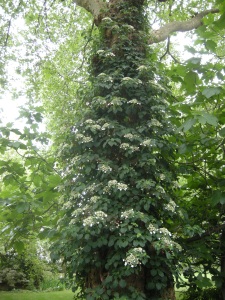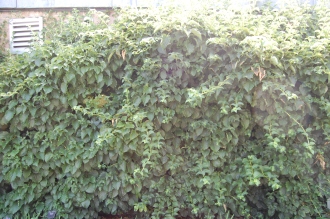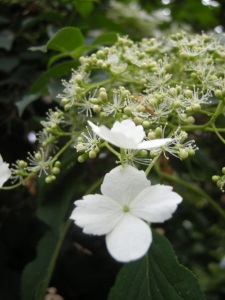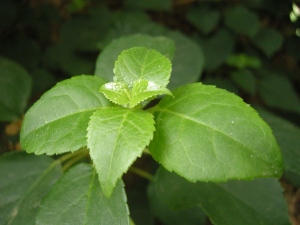Position: Full sun to dappled shade
Soil: Moist, well drained
Flowering period: Mid summer
Eventual Height: 15m
Eventual Spread: 4m
Hardiness: 4a, 4b, 5a, 5b, 6a, 6b, 7a, 7b, 8a, 8b, 9a
Family: Hydrangeaceae
Hydrangea petiolaris is a deciduous self clinging climber (via aerial roots) with vigorous woody shoots. Its dark green leaves are ovate to rounded, have a heart shaped bases, are up to 11cm long and 8cm broad. These turn yellow in autumn before dropping. In summer domed corymbs composed of white and occasionally sterile flowers appear.
Hydrangea petiolaris, commonly known as Climbing Hydrangea, is native to parts of Russia, Korea, Taiwan and Japan, Hydrangea petiolaris is also known as Hydrangea anomala subsp. petiolaris.
The etymological root of the binomial name Hydrangea is derived from the Greek hydor ‘water’ and aggeion ‘a vessel or vase’. Petiolaris alludes to its long petioles (the stalk that joins a leaf to the stem).
Hydrangea petiolaris is useful to the landscape architect as a self clinging climber, particularly in more shady areas, which provides white flowers during late spring to early summer.
Hydrangea petiolaris will tolerate heavy clay soils but will not take to exposed locations and will prefer shade to a sunny location.
Ecologically, Hydrangea petiolaris will attract pollinating insects such as bees that will feed on its nectar.
The Royal Horticultural Society have given Hydrangea petiolaris their prestigious Award of Garden Merit.
Hydrangea petiolaris requires little maintenance. Overlong shoots may be cut back immediately after flowering. Pruning should be kept to a minimum towards the top of the plant as this is where the majority of flowers will be produced. Established plants can withstand hard pruning, however, flowering will be reduced for a few years. Drastic pruning should be staggered over three to four years so as to not reduce the inflorescence too much.







